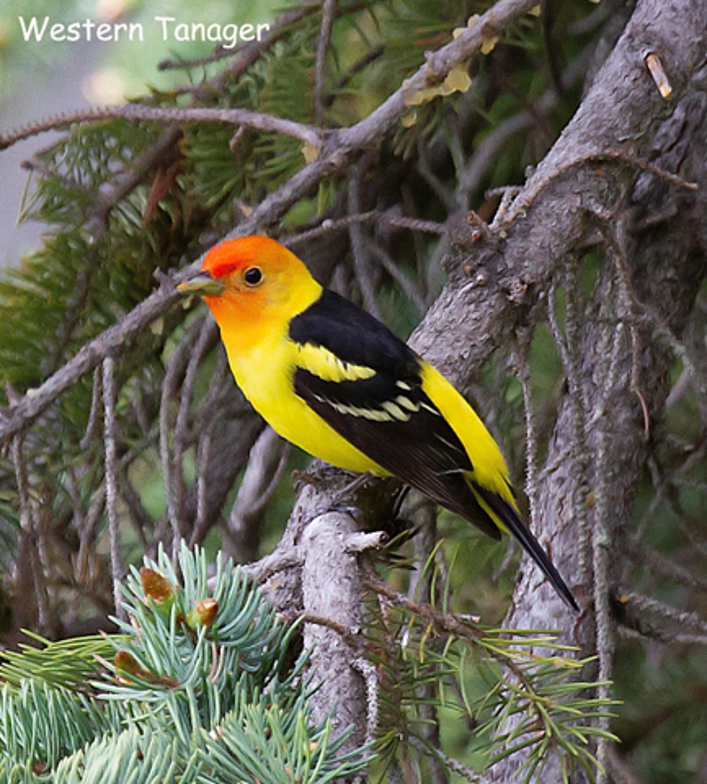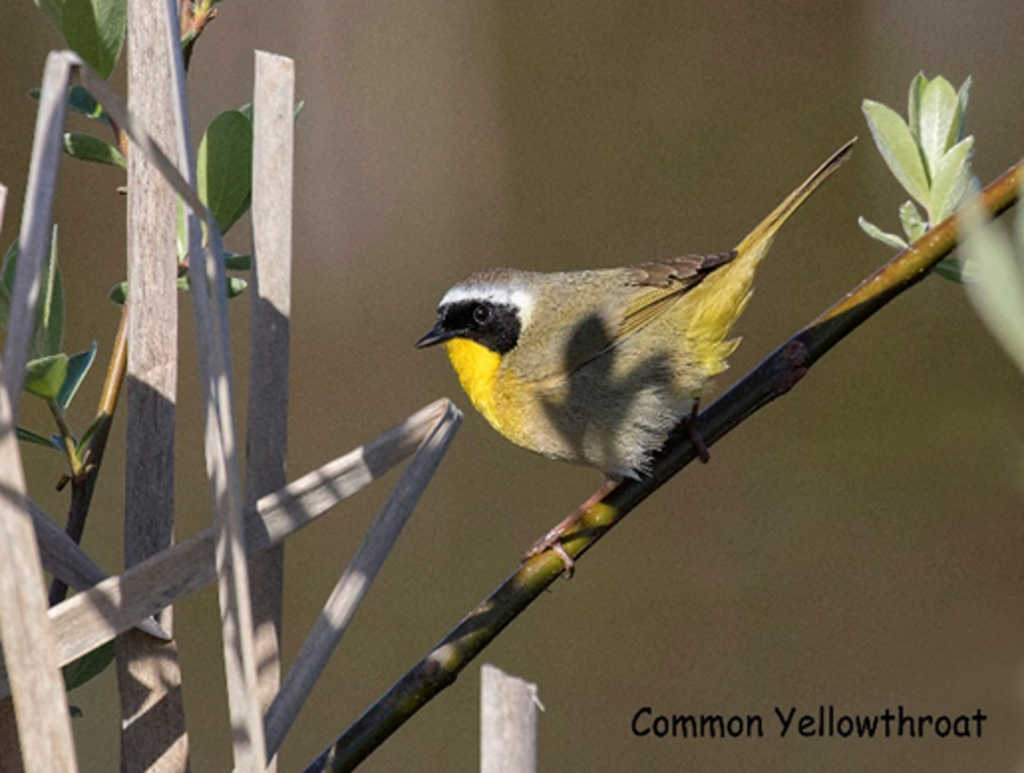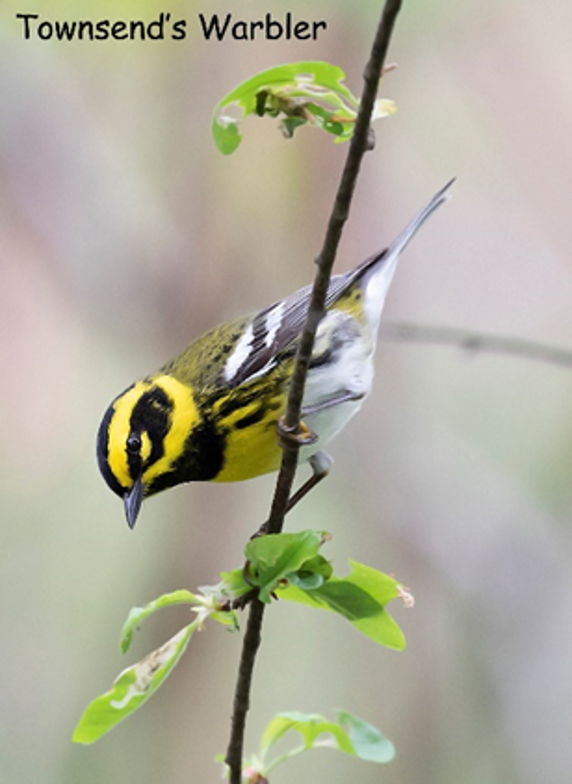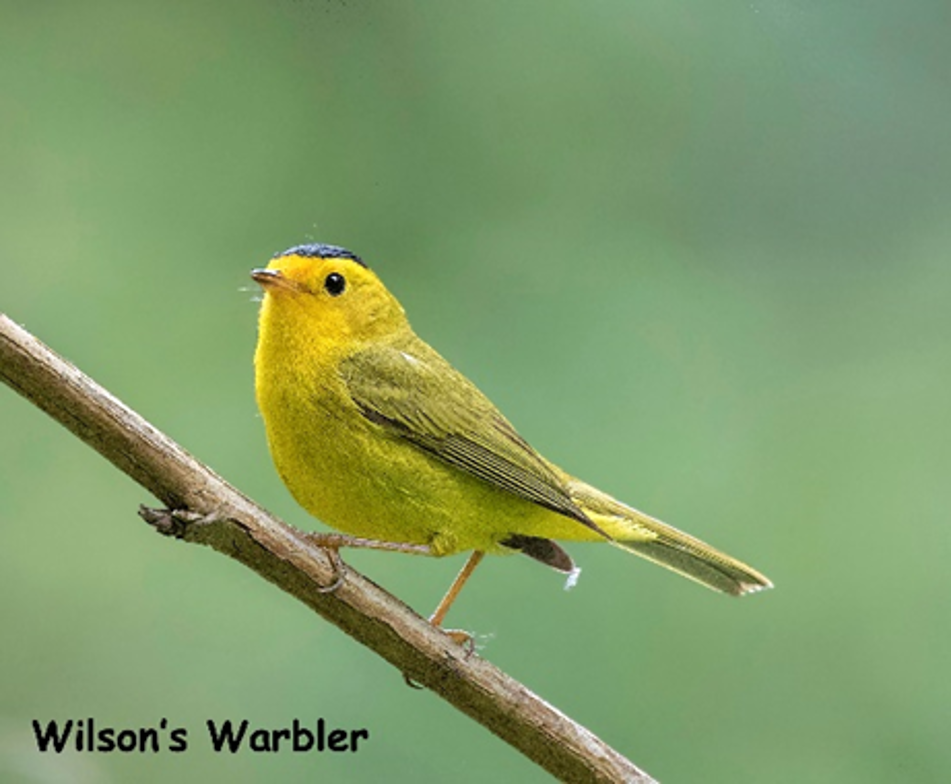May 21,2020






Hello Knox submitted by Peter Candido
Our native warblers are insect-eaters and migrate south to Mexico, Central or South America in the fall, depending upon the species. They are among our most colourful birds, but can be difficult to see properly due to their constant motion while foraging, sometimes high in the trees, and their small size. Here I will feature a selection of the most commonly found warblers in the Vancouver area. Like the warblers, the Western Tanager is also a summer resident, arriving here in May from its wintering areas in Mexico. The male, shown here, is flamboyantly coloured, while the female is yellow overall. All of these species may be seen in our local parks such as Queen Elizabeth Park, Pacific Spirit Park or Iona Island Regional Park, according to the preferred habitat of each. To get good enough looks at these birds for identification, the use of binoculars is highly recommended.
Yellow-rumped Warbler One of our commonest warblers, this bird is gray on the back and head, and sports five patches of yellow: on the crown, the throat, two on the sides of the breast and of course, one on the rump (not visible in the angle shown here). The Yellow-rumped Warbler is hardier than most other warbler species, and a few even remain through the winter, subsisting largely on berries at lower elevations such as the Fraser delta. During migration in April-May, one may see dozens of these birds passing through our parks and gardens.
Wilson’s Warbler Wilson’s Warbler likes to forage in brushy areas and understory at forest edges or clearings, so it’s usually seen close to eye level. The male is an intense yellow below and olive green above, and has a shiny black cap.
Townsend’s Warbler Townsend’s Warbler prefers coniferous or mixed forest, and on its breeding territory is usually found fairly high in the canopy, making it a challenge to view properly. Pacific Spirit Park is a good place to look for it. This bird was photographed on April 28th this year, during migration when birds sometimes can be seen foraging for caterpillars on lower trees and shrubs. This was the best opportunity I have had so far to photograph this species.
Yellow Warbler One of our commonest warblers, the Yellow Warbler is usually found close to water sources. Its preferred habitat includes second growth and the shores of lakes and ponds with lots of willows and shrubs. The male is bright yellow, with fine chesnut streaking on the breast, while the female has little or no streaking. This species has probably the largest range of any warbler in the Americas, breeding from the north coast of Alaska, across Canada to Newfoundland, and south across most of the U.S. and into Mexico.
Common Yellowthroat The Common Yellowthroat is also a warbler. The male is easy to identify with its characteristic black mask bordered by white on the upper edge, and by the bright yellow throat below. The female lacks the black mask. Common Yellowthroats are birds of cattail marshes and wetlands generally, where they forage down low, often keeping under cover.
Western Tanager Western Tanager males seem almost luminous in breeding plumage, with their flame-coloured head and intense yellow underparts and lower back. The upper back and wings are black except for light yellow wingbars. This species breeds in mixed coniferous-deciduous forests, and may be found in Pacific Spirit Park and in our local mountains, e.g. Cypress Provincial Park.
